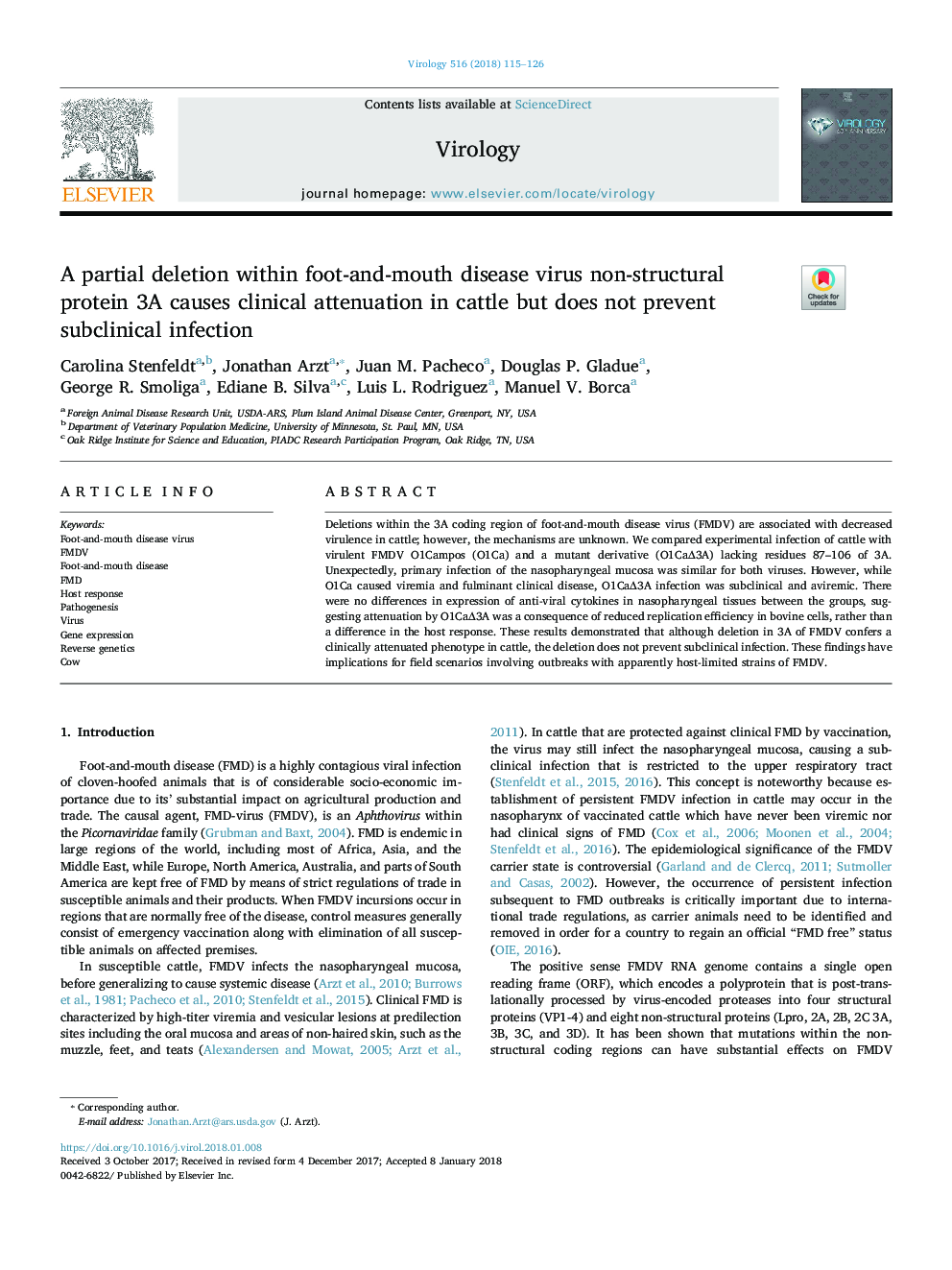| Article ID | Journal | Published Year | Pages | File Type |
|---|---|---|---|---|
| 8751526 | Virology | 2018 | 12 Pages |
Abstract
Deletions within the 3A coding region of foot-and-mouth disease virus (FMDV) are associated with decreased virulence in cattle; however, the mechanisms are unknown. We compared experimental infection of cattle with virulent FMDV O1Campos (O1Ca) and a mutant derivative (O1Caâ3A) lacking residues 87-106 of 3A. Unexpectedly, primary infection of the nasopharyngeal mucosa was similar for both viruses. However, while O1Ca caused viremia and fulminant clinical disease, O1Caâ3A infection was subclinical and aviremic. There were no differences in expression of anti-viral cytokines in nasopharyngeal tissues between the groups, suggesting attenuation by O1Caâ3A was a consequence of reduced replication efficiency in bovine cells, rather than a difference in the host response. These results demonstrated that although deletion in 3A of FMDV confers a clinically attenuated phenotype in cattle, the deletion does not prevent subclinical infection. These findings have implications for field scenarios involving outbreaks with apparently host-limited strains of FMDV.
Keywords
Related Topics
Life Sciences
Immunology and Microbiology
Virology
Authors
Carolina Stenfeldt, Jonathan Arzt, Juan M. Pacheco, Douglas P. Gladue, George R. Smoliga, Ediane B. Silva, Luis L. Rodriguez, Manuel V. Borca,
